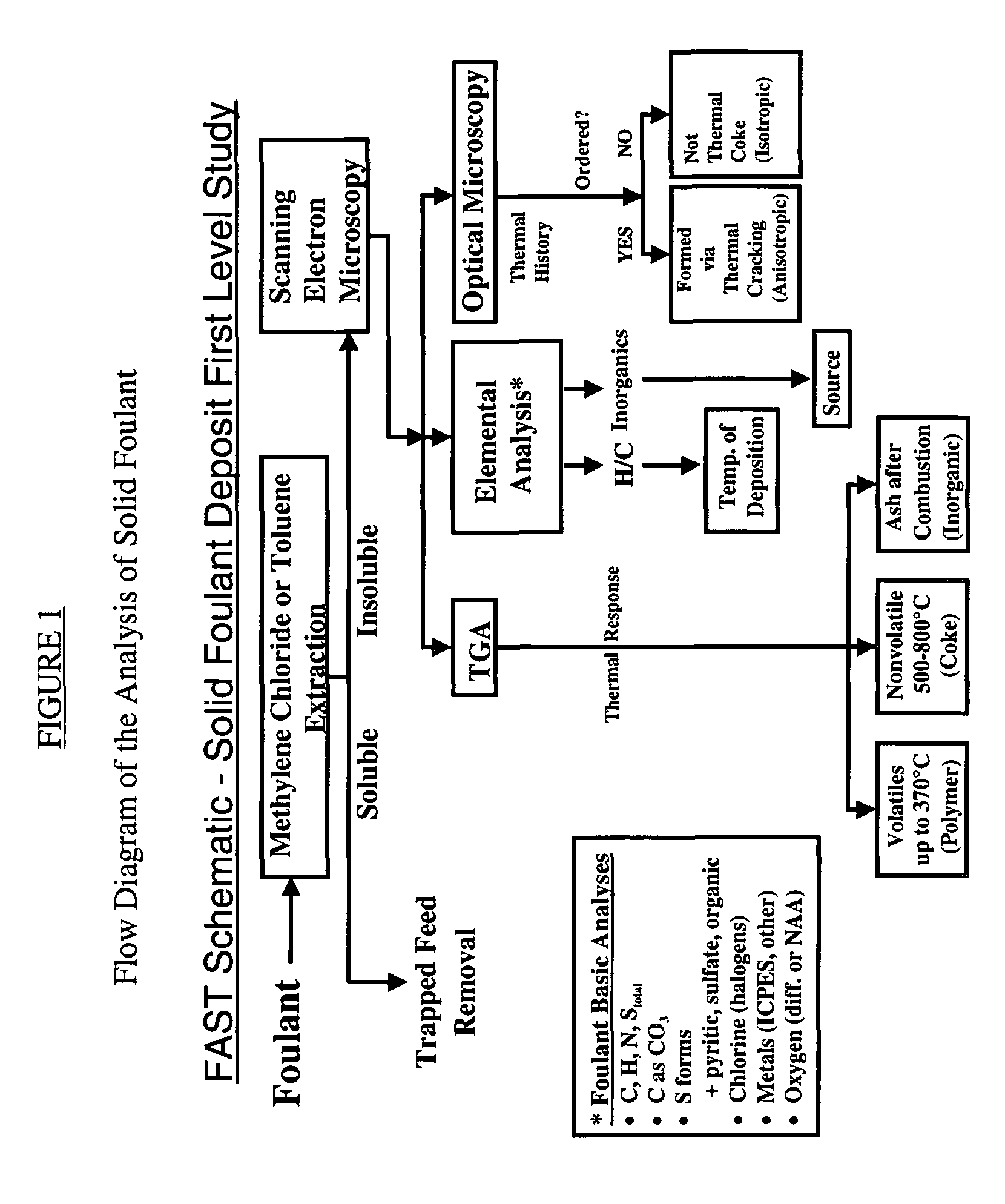Method for refinery foulant deposit characterization
- Summary
- Abstract
- Description
- Claims
- Application Information
AI Technical Summary
Benefits of technology
Problems solved by technology
Method used
Image
Examples
example 1
[0059]The method of the present invention was applied to a fouling deposit from a fouled refinery pre-heat train exchanger. FIG. 2 shows a pictorial of the fouling deposit. FIGS. 3a and 3b show an SEM scan and the element map of the deposit. FIG. 4 shows the major elements to quantify from the SEM / EDX scan. Table 2 gives the analytical results on this fouling deposit. The resulting overall composition of this deposit was found to be predominately calcium carbonate and iron sulfide with lesser amounts of other salts.
[0060]
TABLE 2Analytical Results on Foulant Deposit Example 1LocationTubesideExtraction DataToluene Insol.OilWt. %1000SOLIDS ANALYSISElementsWt. %Carbon10.38HydrogenNitrogenTotal S7.966.25Pyritic S1.37Organic S0.34Sulfate SC as CO39.43Fe6.33Al0.10Ca25.30Mg1.76Mn1.21Zn0.52O as CO337.72TGA DataWt. %Relative volatiles 0.0Total wt. loss to 500° C.1.0Total wt. loss to 800° C.27.0Combustion loss (at 800° C.)0.0Ash73.0
PUM
| Property | Measurement | Unit |
|---|---|---|
| temperature | aaaaa | aaaaa |
| composition | aaaaa | aaaaa |
| scanning electron microscopy | aaaaa | aaaaa |
Abstract
Description
Claims
Application Information
 Login to View More
Login to View More - R&D
- Intellectual Property
- Life Sciences
- Materials
- Tech Scout
- Unparalleled Data Quality
- Higher Quality Content
- 60% Fewer Hallucinations
Browse by: Latest US Patents, China's latest patents, Technical Efficacy Thesaurus, Application Domain, Technology Topic, Popular Technical Reports.
© 2025 PatSnap. All rights reserved.Legal|Privacy policy|Modern Slavery Act Transparency Statement|Sitemap|About US| Contact US: help@patsnap.com



